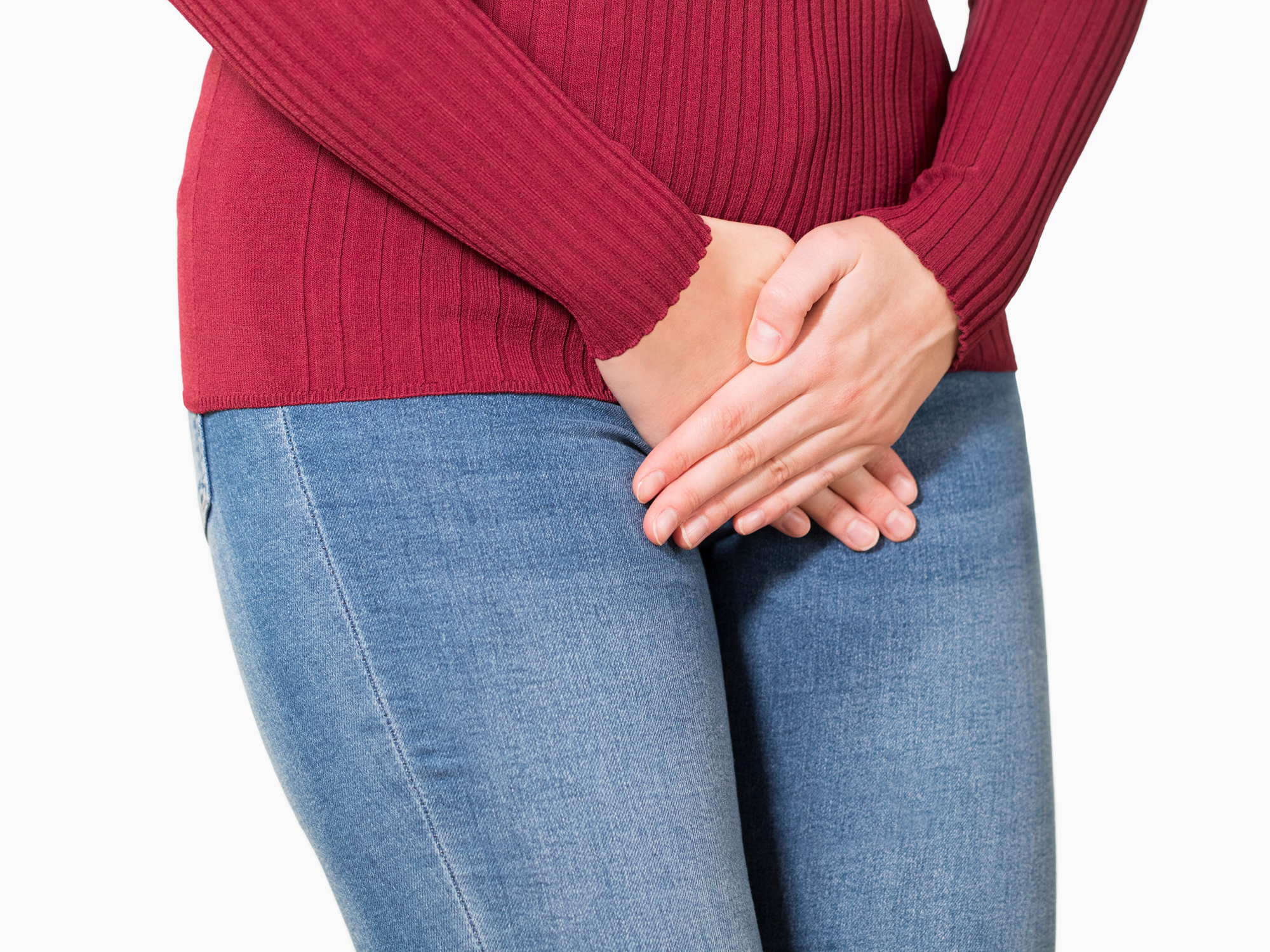Get Easy Health Digest™ in your inbox and don’t miss a thing when you subscribe today. Plus, get the free bonus report, Mother Nature’s Tips, Tricks and Remedies for Cholesterol, Blood Pressure & Blood Sugar as my way of saying welcome to the community!
How to laugh, cough, sneeze and run without bladder leaks

A few years ago, I dreaded coughing or sneezing because no matter what, it made my bladder leak.
It was so bad that I had to give up one of my favorite kinds of exercise and stress relief — rebounding.
That’s where you exercise using one of those mini-trampolines. Years ago, I had been told by a trusted friend in the medical field that it’s one of the best exercises you can do for your cardio health, so you can understand how disappointed I was that there would be no more of that.
But bouncing and my bladder no longer mixed! That’s when I decided I had to do something. But, what?
Of course, there are prescription medications to help with bladder leaks… but beware.
Drugs used for bladder control are anticholinergics. The problem with these drugs starts with the fact that they interfere with the neurotransmitter called acetylcholine. Acetylcholine is used by the neurons in your brain to send messages to each other. You need a steady supply of this substance to keep your memory working correctly.
No worries, you don’t have to choose between a happy bladder and a functioning brain…
An old answer with a new twist
Researchers in Sweden decided to take a new approach to an old recommendation to improve urinary incontinence by combining pelvic floor training with an app.
The app was evaluated in a study with 123 participating women from all over the country.
The self-reported results and lists of leakage showed that the situation for women who had used the app improved with regard to symptom, quality of life, number of leakages and use of incontinence pads.
In fact, the number of leakages was reduced from an average of three times to just once per day in the group that had used the app.
So, what was this pelvic floor training the app helped with?
You may know it as good old-fashioned Kegel exercises.
Kegel exercises strengthen the pelvic floor muscles, which support the uterus, bladder, small intestine and rectum, so that you don’t leak.
To do Kegel exercises:
- Find the right muscles – To identify your pelvic floor muscles, stop urination in midstream. If you succeed, you’ve got the right muscles. (Don’t make a habit of using Kegel exercises to start and stop your urine stream. Doing Kegel exercises while emptying your bladder can actually lead to incomplete emptying of the bladder — which increases the risk of a urinary tract infection.)
- Practice – Tighten your pelvic floor muscles, hold the contraction for five seconds, and then relax for five seconds. Try it four or five times in a row. Work up to keeping the muscles contracted for 10 seconds at a time, relaxing for 10 seconds between contractions.
- Maintain your focus – For best results, focus on tightening only your pelvic floor muscles. Be careful not to flex the muscles in your abdomen, thighs or buttocks. Avoid holding your breath. Instead, breathe freely during the exercises.
- Repeat three times a day – Aim for at least three sets of 10 repetitions a day.
And, if you want help, apps are readily available. You can get one for your iPhone or Android.
Other ways to help a weak bladder
I also found a number of other ways to help with incontinence. These include:
- Getting fit – Excess belly fat puts pressure on the bladder and the pelvic muscles. Shedding a few pounds if you are overweight can help restore your bladder control.
- Training your bladder – Training your bladder can help you learn to put off the need to rush to the nearest bathroom. In the beginning, try to delay urinating by 10 minutes and build up to 20 minutes. Eventually you increase the time so that you can comfortably use the restroom every four hours.
- Taking soy germ isoflavones – These natural plant estrogens are called phytoestrogens. They naturally help balance estrogen levels to help support stronger bladder function.
- Adding magnesium – In a study, women with urge incontinence, reported improvement after supplementing with magnesium. Take 150 mg twice daily to reduce symptoms.
Editor’s note: Did you know that when you take your body from acid to alkaline you can boost your energy, lose weight, soothe digestion, avoid illness and achieve wellness? Click here to discover The Alkaline Secret to Ultimate Vitality and revive your life today!
Sources:
- Exercise app reduces incontinence — Umea University
- Urinary Incontinence (Holistic) — Michigan Medicine












